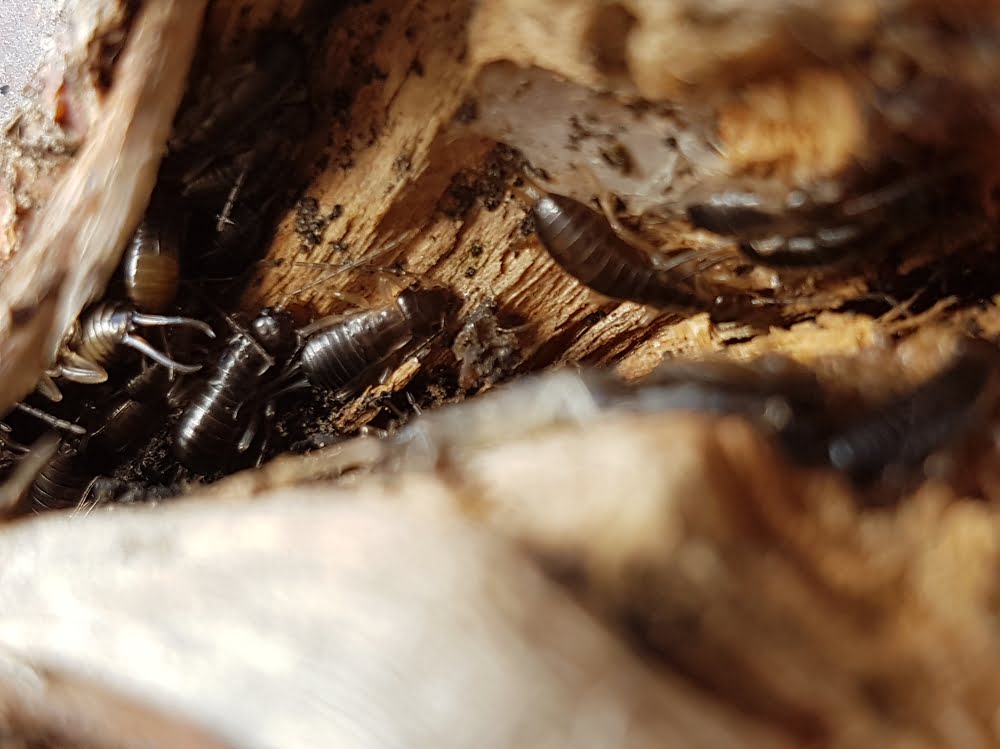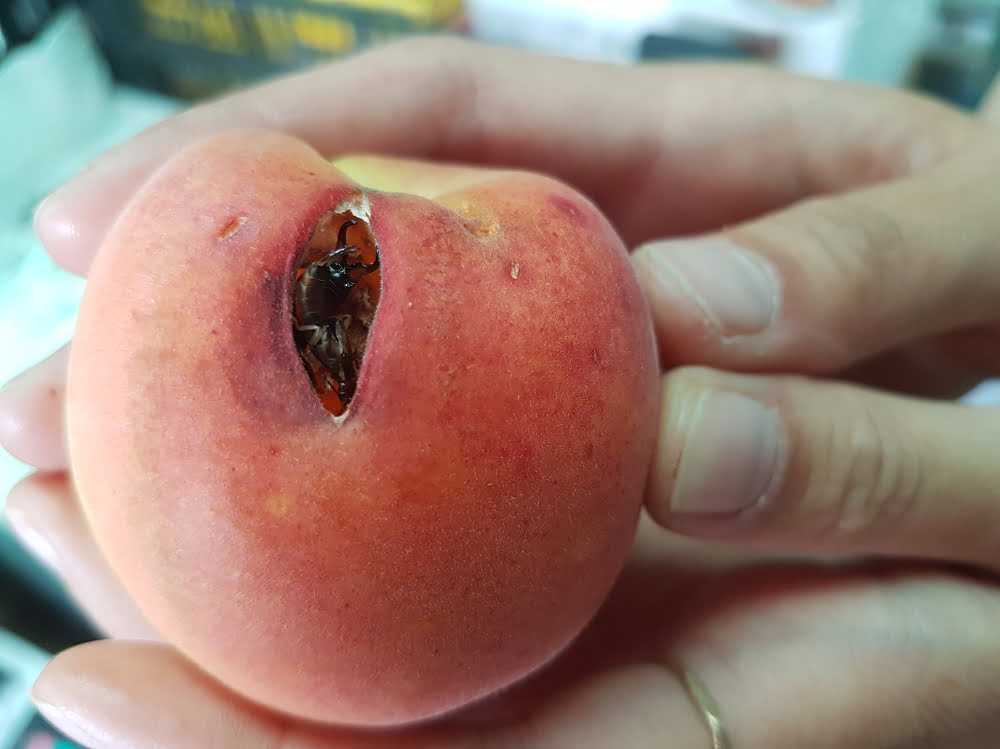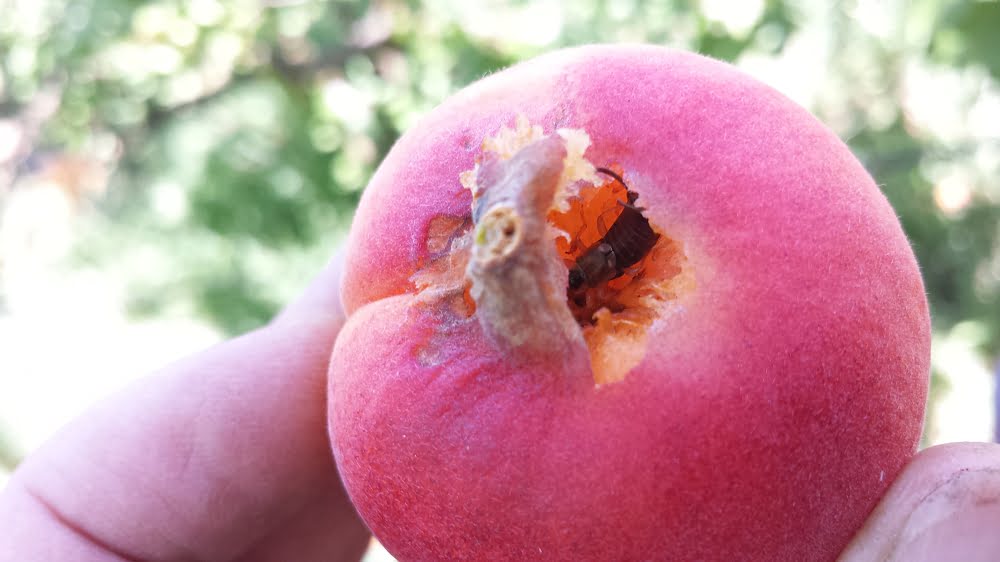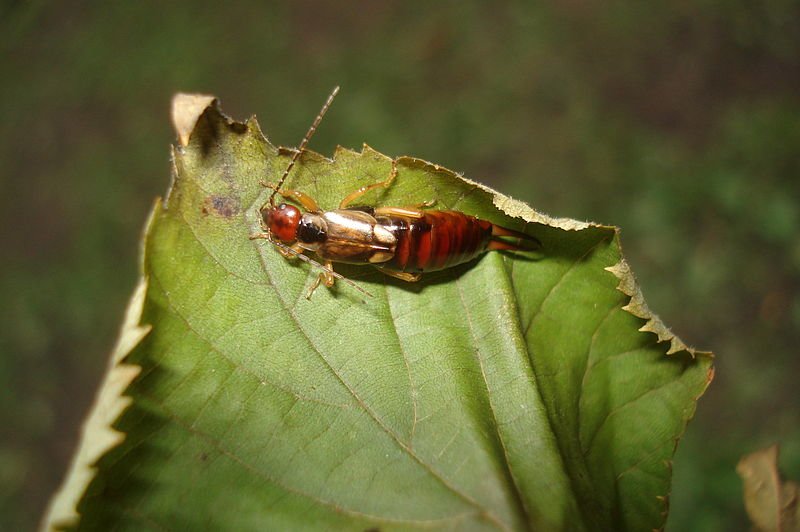Estimated reading time: 5 minutes
Earwigs are a common pest of fruit trees, but they’re also a handy predator. So, are they your friends or your foes?
Should you hate them, or love them?
Related Articles
To mulch or not to mulch under your fruit trees?
Mulching under fruit trees is not as good as living understory, but has its place for young trees, or for mature trees if done correctly.
What broke my fruit tree?
Broken fruit trees can be caused by animals eating them, or accidental damage. Identifying the animal is the first step to prevention.
3 simple ways to improve your soil
Here are 3 simple ways to kickstart the health of your soil to help you grow fruit that is full of vitamins and minerals.
On the one hand, we appreciate all creatures as having a rightful place in the thriving ecosystem of our garden. On the other hand, they can do an awful lot of damage to your precious fruit!
Where do earwigs come from?
There’s nothing like finding a writhing nest of earwigs in a crack in a peach tree when you’re pruning (watch the video here). It’s a great reminder that they are probably already in your trees. If not, there’s a good chance there’s an earwig nest in the soil beneath your trees.
Earwigs don’t migrate very far. If you’ve seen them in your garden, you’ll likely see them again. And that means you’ll need to take steps to prevent these apparently insignificant creatures from wreaking havoc on your fruit.

As we’ve mentioned in other blogs, the key to effective pest and disease management is to figure out how to protect your trees (or fruit, depending on the pest) from the pest.
The alternative is trying to get rid of the pest. In our experience, this is expensive, ineffective and may even be damaging to your ecosystem.
So, how to prevent them?

Using our first principles of pest control, the first thing to do is to look at their life cycle. These pests overwinter in cracks in the bark in your tree, or in the soil or litter under the tree.
They also love fence lines, bits of wood, or in fact anything lying around on the ground that provides them with darkness and shelter.
In late winter/early spring, young earwigs hatch out and start moving. They will often head up into your fruit trees as soon as there are buds or fresh new leaves to munch on. This is way before there’s any evidence of fruit.
Protecting your fruit from damage
The key to controlling them (as with all pests of fruit trees) is understanding a few things about them:
- When are they likely to start getting into your trees? (Answer: in late winter/early spring).
- How do they get where they’re going? (Answer: they walk up the trunk).
- What do they do when they get there? (Answer: hide in a dark place during the day and come out at night to eat your fruit).
Some individuals may leave the tree to return to a nest elsewhere. Some just take up residence and stay in the tree, making it hard to get rid of them once they’re there.
If you haven’t experienced earwig damage in your fruit before, here’s just one example (below) of what they can do.

What other insects are in this category?
There are lots of insects that can walk into your fruit tree and make a mess. You may have experienced Harlequin bugs or some type of weevils.
A common insect that causes problems for a lot of stone fruit growers is garden weevils.
If you notice that something is eating the fruit or the leaves in your tree, it’s worth taking some time to observe what’s actually happening. With persistence (for example, checking at different times of day and night), you’ll usually be able to track down the culprit.
Getting to know the pest and its life cycle is the approach we use with all our organic pest control.
Taking action in your garden
Once you know a bit about the pest, figuring out how to prevent damage becomes relatively easy. With walking insects like earwigs, you just have to provide a barrier they can’t walk over, and you have to do it earlier rather than later.
On the farm, we do this with double-sided barrier tape. However, you can achieve the same result with anything sticky such as horticultural glue. You can even use a layer of grease, but be sure to put a physical barrier such as plastic wrap around the trunk of your tree first to protect the tree.
If insect numbers build up enough, they can be as devastating to your crop as birds. They really need to be taken seriously.
Having said that, you may lose a smaller proportion of fruit over time as trees get larger and bear bigger crops. The damage is often confined to the lower branches. However, it’s still a pest worth preventing.

Is there anything to like about earwigs?
So, having established that earwigs and garden weevils are most definitely a pest, why ask the question about whether they are friends or foes? Surely you should just hate them, right?
It’s never that simple.
Turns out that earwigs are also a wonderful predator of aphids. They particularly love to munch on the very messy white Woolly Aphids that you may find in your apple trees.
This is a great example of why it’s never a good idea to kill insects. Instead, just encourage them to hang out where they can do the most good and the least damage in your garden.
Related Articles
To mulch or not to mulch under your fruit trees?
Mulching under fruit trees is not as good as living understory, but has its place for young trees, or for mature trees if done correctly.
What broke my fruit tree?
Broken fruit trees can be caused by animals eating them, or accidental damage. Identifying the animal is the first step to prevention.
3 simple ways to improve your soil
Here are 3 simple ways to kickstart the health of your soil to help you grow fruit that is full of vitamins and minerals.







Great information…earwigs are the bane of my garden! They seem to particularly like the peach/nectarine family and anything that resembles a zucchini or pumpkin seedling!
Where is barrier tape obtained?
Hi Anna, it’s often sold as insect trapping tape in short lengths, or you can buy rolls of it from some garden centres.
Chickens love earwigs! If you have fruit trees big enough to cope with chickens for a rotation, they will do a lot to reduce insect pests and their eggs. Maybe put them in before budburst. If you have cows, you could then tractor chooks after them to break up and spread the pats; feeding on insects and maggots as they go. Maybe put electric netting around dormant trees and let the chickens free range around one group of trees at a time to eat insects and their eggs, scratching up around the tree base to find those most concentrated. Then tempt them back into their tractor coop late afternoon with sprouted seed for an evening feed or leave the coop in there. They will also eat windfall fruit and create yet another income stream or saving of meat, eggs and high-quality manure. Yes, even children’s books depict chickens and geese in orchards, which most orchardists don’t use. Windfall to pigs is another income stream, but may require manual pickup. Has anyone had experience of briefly putting pigs in long enough to pick up windfall fruit only. I would imagine it would be difficult to get them back out!
Thanks Ari, that’s some great suggestions. We have a few buddies who have tried pigs in the orchard, they’re awesome but they need to be moved very quickly to keep the benefits outweighing the digging!
Interesting. Does it mean that the barrier tape shouldn’t be put on apple trees?
It sure does Bozena! We only use the tape when we want to stop insects crawling into the trees that might damage our fruit, and there’s no major insects that attack apples that get into the trees by crawling – they fly, so no need to put on the sticky tape. It is sometimes used in spring if you have a bad Codling moth problem, as a very few of the moths that emerge from the soil in spring may flutter up the trunk and be caught by the sticky trap, but only a very small percentage, most of them fly, so it’s not usually worth the effort. This is different to the other type of band we use on the trunks to prevent Codling moth though, which is a corrugated cardboard, hessian or similar in late summer/autumn, which is intended to provide a pupation site.
Sprinkle Diatomaceous Earth Powder
Get food-grade diatomaceous earth and sprinkle the white powder along the perimeter of the garden or around the base of the infested plants. Diatomaceous earth can kill earwigs by causing tiny cuts on their exoskeleton
Thank you
For the hints and tricks. I’m 94 years young and there is ALWAYS so. U h more to learn., especially about earwigs. Do you still think it good to have nasturtiums at the base of apple trees?
Love your attitude Joy. We reckon the benefits of nasturtiums (or other floral understory plants) are likely to outweigh the cons :). Good luck, Meg – Grow Great Fruit team.
I put rolled up sheets of damp newspaper on the ground (held down with a small stone), amongst the strawberries and the vegetable seedlings. Check every day by unrolling the paper and tipping out the collected earwigs for chooks or promptly squish. It does help to keep the crazy numbers down and allows for crops to grow. I would never have any crops otherwise.
I also place the rolls at the base of my fruit trees which helps. Newspaper is easier to manage than the vegetable oil in small containers, especially if there is rainy weather.
Great tip Libby, thanks! Meg – Grow Great Fruit team.
What is the width of the double-sided yellow barrier tape you use to deter earwigs? I have had trouble finding it on-line. I bought the 15cm wide optiroll, but it’s too big and awkward to use and seems to be designed to attract flying insects. Are you able to name a brand or where you can purchase it from?
Have you ever considered using non-lethal methods to deter large animals from damaging your fruit trees, such as installing motion-activated sprinklers or using scent repellents?